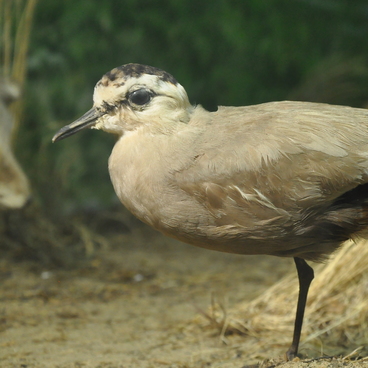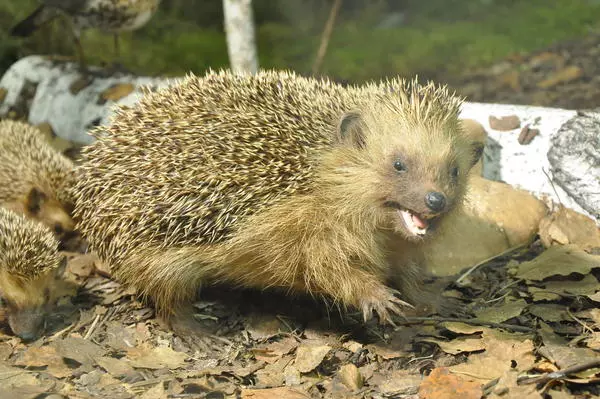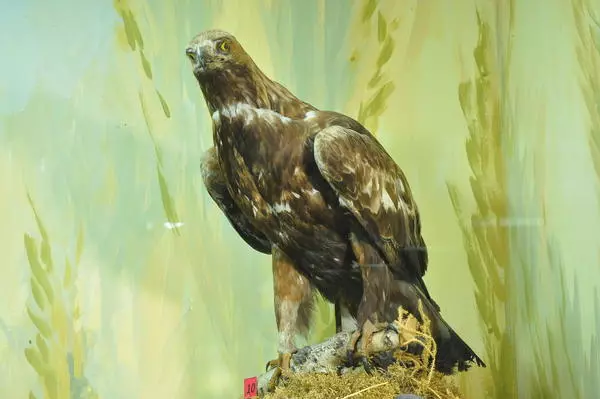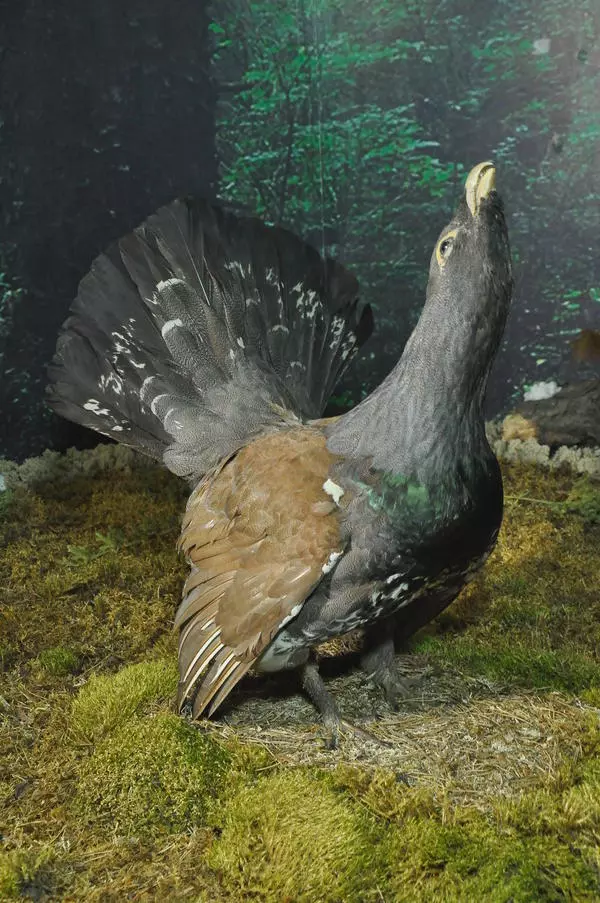The white-tailed eagle belongs to the Accipitridae family. Its Latin name is Haliaeetus albicilla. It is a large bird of prey, similar to an eagle, but larger and wider- winged. The body length of the white-tailed eagle is 70 to 90 centimetres, the wingspan is between 200 and 230 centimetres, and it weighs between 4 and 7 kg. Females are much larger and heavier than males.
The eagle is brownish, its head is lighter and its wedge-shaped tail is pure white. The white color of the tail plumage gave the name to the bird. These birds’ eyes are ochre-yellow, and their massive beak is hooked at the end.
The wide and strong wings allow the bird to spend a long time in the sky. When the white-tailed eagle looks for prey, it can slow down the pace and then fly down at full speed.
Eagles most often settle near large, fish-rich reservoirs. The birds can live in the same area for many years, if they are not disturbed by humans. They build nests from thick, densely laid brunches. Eagle dwellings are usually located in the crowns of old trees and can reach two meters in diameter and the same size in height. The birds lay 1-3 eggs. The breeding lasts a little more than a month, with both the female and the male taking part in the process.
Eagles look for pray from a tree and catch them flying at a very low level. Their main staple food is fish. They also catch water birds, muskrat, and willingly eat scavengers. In the autumn and winter time, they search in the hunting grounds for wounded game and the remains of prey cut by hunters.
There was a period in the species’ history when the number of birds rapidly decreased. This occurred in the 1940s, not only in Russia, but in other European countries as well. This decline was caused by widespread use of toxic chemicals and the campaign against birds of prey, which were considered harmful to the economy.
The middle of the 20th century saw hunters get monetary reward, in the USSR, for the feet of a killed bird of prey. The number of white-tailed eagles has increased significantly over the past 30 years due to the government environmental policy. The eagle is now listed in the Red Book of the Kurgan Region.
The eagle is brownish, its head is lighter and its wedge-shaped tail is pure white. The white color of the tail plumage gave the name to the bird. These birds’ eyes are ochre-yellow, and their massive beak is hooked at the end.
The wide and strong wings allow the bird to spend a long time in the sky. When the white-tailed eagle looks for prey, it can slow down the pace and then fly down at full speed.
Eagles most often settle near large, fish-rich reservoirs. The birds can live in the same area for many years, if they are not disturbed by humans. They build nests from thick, densely laid brunches. Eagle dwellings are usually located in the crowns of old trees and can reach two meters in diameter and the same size in height. The birds lay 1-3 eggs. The breeding lasts a little more than a month, with both the female and the male taking part in the process.
Eagles look for pray from a tree and catch them flying at a very low level. Their main staple food is fish. They also catch water birds, muskrat, and willingly eat scavengers. In the autumn and winter time, they search in the hunting grounds for wounded game and the remains of prey cut by hunters.
There was a period in the species’ history when the number of birds rapidly decreased. This occurred in the 1940s, not only in Russia, but in other European countries as well. This decline was caused by widespread use of toxic chemicals and the campaign against birds of prey, which were considered harmful to the economy.
The middle of the 20th century saw hunters get monetary reward, in the USSR, for the feet of a killed bird of prey. The number of white-tailed eagles has increased significantly over the past 30 years due to the government environmental policy. The eagle is now listed in the Red Book of the Kurgan Region.












